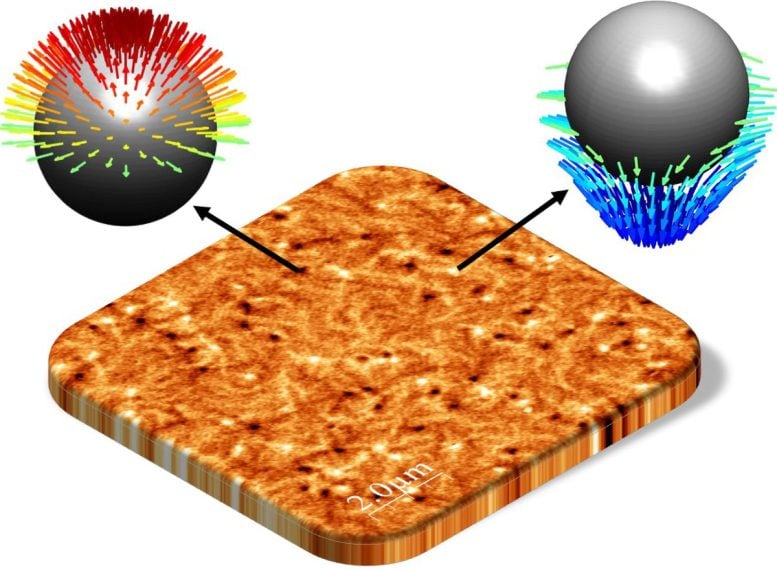Researchers have discovered merons in synthetic antiferromagnets, advancing the field of spintronics toward more efficient, compact, and sustainable computing.
For the first time, teams from Germany and Japan have successfully identified collective topological spin formations known as merons within layered synthetic antiferromagnets.
Our everyday electronic devices, such as living room lights, washing machines, and televisions, operate thanks to electrical currents. Similarly, the functioning of computers is based on the manipulation of information by small charge carriers known as electrons. Spintronics, on the other hand, introduces a unique approach to this process.
Instead of the charge of electrons, the spintronic approach is to exploit their magnetic moment, in other words, their spin, to store and process information – aiming to make the computers of the future more compact, fast, and sustainable. One way of processing information based on this approach is to use the magnetic vortices called skyrmions or, alternatively, their still little understood and rarer cousins called ‘merons’. Both are collective topological structures formed of numerous individual spins. Merons have to date only been observed in natural antiferromagnets, where they are difficult to both analyze and manipulate.
Finding merons in synthetic antiferromagnets
Working in collaboration with teams at Tohoku University in Japan and the ALBA Synchrotron Light Facility in Spain, researchers of Johannes Gutenberg University Mainz (JGU) have been the first to demonstrate the presence of merons in synthetic antiferromagnets and thus in materials that can be produced using standard deposition techniques. “We were able to devise a novel habitat for what is a new and very ‘shy’ species,” said Dr. Robert Frömter, a physicist at JGU. The research achievement involves designing synthetic antiferromagnets in such a way that merons are formed in them as well as the detection of the merons themselves.
In order to put together the corresponding materials made of multiple layers, the researchers undertook extensive simulations and conducted analytical calculations of spin structures in cooperation with a theory group at JGU. The goal was to determine the optimal thickness of each layer and the suitable material to facilitate the hosting of merons and to understand the criteria for their stability.
In tandem with theoretical work, the team pursued experiments to address these challenges. “With the aid of magnetic force microscopy in conjunction with the less familiar scanning electron microscopy with polarization analysis, we successfully identified merons in our synthetic antiferromagnets,” explained Mona Bhukta, a doctoral candidate at JGU’s Institute of Physics. “We have thus managed to make a step forward towards the potential application of merons.”
Professor Mathias Kläui, head of the research team, is delighted by the opportunity to cooperate with Tohoku University, one of the leading Japanese institutions in the field of spintronics. “We’ve been undertaking joint activities for more than ten years now – with the support of the German Academic Exchange Service (DAAD) and other exchange projects. Recently, the first jointly supervised Ph.D. candidate under the cooperation agreement with Tohoku obtained his degree, passing with distinction.”
Reference: “Homochiral antiferromagnetic merons, antimerons and bimerons realized in synthetic antiferromagnets” by Mona Bhukta, Takaaki Dohi, Venkata Krishna Bharadwaj, Ricardo Zarzuela, Maria-Andromachi Syskaki, Michael Foerster, Miguel Angel Niño, Jairo Sinova, Robert Frömter and Mathias Kläui, 26 February 2024, Nature Communications.
DOI: 10.1038/s41467-024-45375-z






